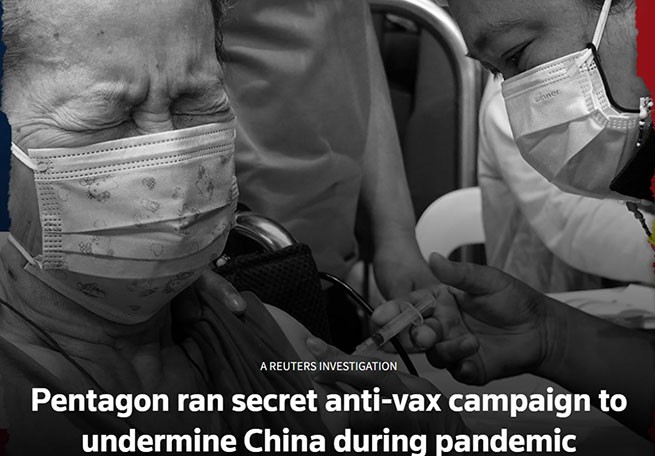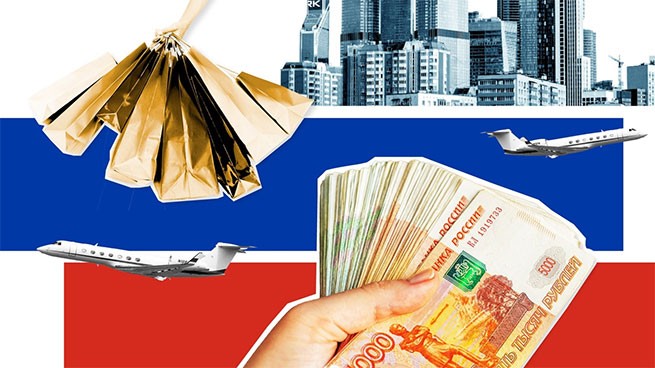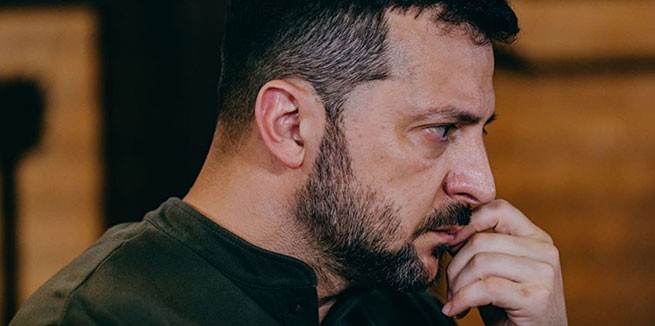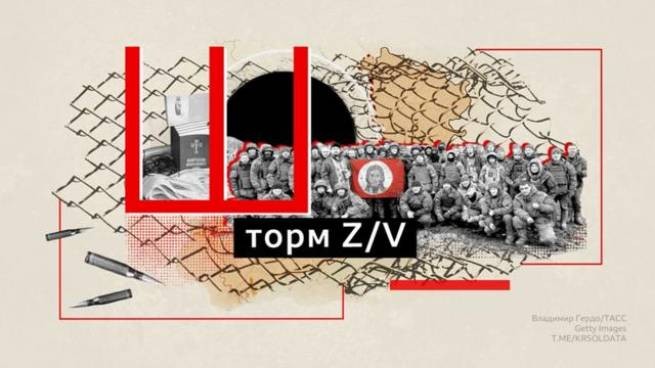Completely new expressions have flooded the Internet and are appearing in colloquial speech against the backdrop of the war in Ukraine, and some common concepts have acquired a slightly different meaning.
The BBC publication tried draw up new “wartime dictionary”. Here are just some of the terms and expressions from it – you’ve probably heard or used most of them in conversation.
Z-bloggers, military officers, propagandists
Military correspondents used to be the name given to state media employees covering the war from the scene. But this term has now “blurred”: he called himself a military correspondent, for example, late Vladlen Tatarsky, who worked for his telegram channel and did not hide the fact that he took up arms, which is contrary to journalistic ethics.
At the same time, the concept appeared Z-blogger: this is the name given to people who write about the war from a pro-Russian position on social networks (mainly in Telegram channels), in some cases having an audience of millions. There you can find professional analytics, and simply emotional statements, sometimes with curses addressed to… (substitute your choice – the West, the Russian Ministry of Defense, liberals, etc.).
War propagandists became important participants in political life. Vladimir Putin met with them, including behind closed doors. Some have been appointed to the Presidential Council for Human Rights, where real human rights activists previously worked.
Drones
Unmanned systems have become one of the characteristic features and an important component of the war between Ukraine and Russia. We are talking about dozens, if not hundreds, of systems that are widely used in different environments with different tasks.
At the first stage of the great war, the Turkish Bayraktar, which is in service with the Ukrainian Armed Forces, was called “drone number one.” There is an opinion that these attack drones played a decisive role in the defense of Kyiv from the superior forces of the Russians.
In the fall of 2022, Russia began using Iranian-made Shahed kamikaze drones on the battlefield (more precisely, more often in the rear areas of Ukraine). Now we are talking about localizing their production in Russia.
Today, experts call FPV drones one of the decisive factors influencing the state of the front line. According to experts, the Russians, who lagged behind the Ukrainians in this regard just a year ago, are now rapidly closing the gap.
In the development and use of maritime drones, Ukraine is among the leading countries in the world. The importance of drones for the country is emphasized by the recent decision of the country’s President Vladimir Zelensky to create a new type of troops within the Armed Forces of Ukraine – the Unmanned Systems Forces.
Ukraine has also hit targets deep in Russia with drones. In the summer, drones regularly flew to Moscow, including slightly damaging the Moscow City towers. At the airports of the capital and St. Petersburg, the “Carpet” plan was regularly announced, which implied the closure of airspace and, as a result, delays and cancellations of flights.
Bavovna
Ukrainian word, translated meaning cotton, plant. Used to mockingly describe explosions at military and infrastructure facilities located on the territory of the Russian Federation. In 2022, when Ukraine began launching strikes on targets in Russia, local media described these events with reports in the spirit of “local residents heard a bang.” Machine translation believed that we were talking about a plant, and so “bavovna” appeared first on Ukrainian news sites, and then in everyday life – precisely in the meaning of “an explosion, which for some reason we do not want to call an explosion.”
After the start of the war in Ukraine, cotton stalks began to be added to bouquets. Lumps of cotton wool, laid out, for example, on the fluffy branches of a Christmas tree, have acquired a new meaning.
IPSO and TsIPSO
“Information-psychological operation”: we are talking about the purposeful dissemination by one of the parties of certain information that can have a detrimental effect on the morale and morale of the troops and civilian population of the enemy country.
In the structures of the armed forces of both sides – both Ukraine and Russia – there are units whose direct task is to conduct IPSO. And the name of the 72nd Center of the Special Operations Forces of the Armed Forces of Ukraine – TsIPSO – has become a household name in Russian military telegram channels.
Ukrainian observers call the most successful Russian IPSO the story with marks at the beginning of the war. In the first few days after the Russian invasion of Ukraine, thousands of residents of the country succumbed to the panic spread on social networks and rushed to look for “saboteurs” leaving “tags” for Russian missiles on the streets and rooftops.
In Russia, a series of arson attacks on military registration and enlistment offices throughout the country are called Ukrainian IPSO: the actions of the arsonists over the telephone were allegedly directed by people who introduced themselves as FSB officers.
Mobilization
Already on the first day of the war, February 24, 2022, general mobilization was announced in Ukraine. It continues now, and the Verkhovna Rada is considering the bill about its tightening: the figure was stated that by 2024 the Armed Forces of Ukraine need 400-500 thousand people.
In Russia, “partial” mobilization, according to the decree of Vladimir Putin, was officially announced once – in September 2022. Then, according to the authorities, more than 300 thousand people were drafted.
None of them have returned home legally yet: they were called up before the end of mobilization activities, and the corresponding decree never appeared. In the second year of the war, instead of mass mailing of subpoenas, the Russian army was replenished mainly by volunteers (coercion into contracts is still a common practice, the publication notes), prisoners and foreigners – including labor migrants, who were registered en masse to the military registration and enlistment office as a result of police raids.
“Meat Storms”
This expression refers to an attack on the enemy’s fortified positions, when the lack of preparation must be compensated by the number of manpower. Apparently this phrase comes from the famous “cannon fodder” in the past.
Most often this expression was heard during the Russian offensive near Bakhmut. According to eyewitnesses on both sides, this was a deliberate tactic by units of the Wagner PMC, which sent recruited prisoners to attack in order to identify the firing positions of the Ukrainian Armed Forces. Russian Z-bloggers blame the Ukrainian Armed Forces for the “meat assaults,” but there was no evidence of this from sources not related to Russia.
Parallel import
Russia is the world leader in sanctions imposed against it by other countries. Since the beginning of the war, the West has already accepted 13 packages. There is no single assessment of their effectiveness. On the one hand, sanctions have made life difficult for many sectors of the economy. On the other hand, in two years Russia has learned to bypass many restrictions with the help of gray schemes and intermediary countries (mainly Asian).
At the everyday level, for Russian citizens, sanctions have led to a reduction and change in the range of goods. A clear example is that Chinese cars confidently dominate the automobile market. However, Western goods have not disappeared completely; they end up in Russia through “parallel import” schemes and are sold at a significant markup on marketplaces.
SVO
Even two years after the full-scale invasion began, Russia is still prohibited from calling it a war—the euphemism “special military operation,” or SVO, is still used in official speeches by officials and in the media.
At the same time, there is no such term in military science, there is only a consonant one: “special operation.” It implies speed, the participation of only high-class professionals, a reliance on accurate intelligence – in a word, nothing that we have seen since February 24, 2022. The word “war” can be used mainly in the context of confrontation with the real enemy, according to the assurances of the Russian leadership, the “collective West.”
“Storm Z/V”
Units formed from recruited prisoners. Storm V companies replaced Storm Z in August 2023. At the same time, the conditions for recruiting prisoners also changed: previously they were recruited with the promise of a presidential pardon (and expungement of their criminal record) after six months of service. As a result, people convicted of serious crimes were released and committed new crimes soon after returning from the front.
Now those recruited into Storm V can only count on conditional release, and then only after the end of the war. Like the convicts from the Wagner PMC, they are thrown into the most difficult areas of the fighting. One Air Force interviewee estimated his chances of surviving each collision at about 25%.
At first glance, “everything is the same as for contract soldiers, but there is no longer any pardon.” What awaits the prisoners who are now sent to fight in Ukraine? As of February 20, the Air Force, Mediazona and a team of volunteers managed to establish the names of 8,420 convicts who died on the territory of Ukraine while fighting as part of Russian units. At least 1,420 of them fought in Storm Z or Storm V units.







More Stories
WSJ: Mike Pompeo voiced "Trump's peace plan for Ukraine"
Survey about "brotherhood of the Russian and Ukrainian peoples"
Neo-Nazis claim responsibility for Farion's murder